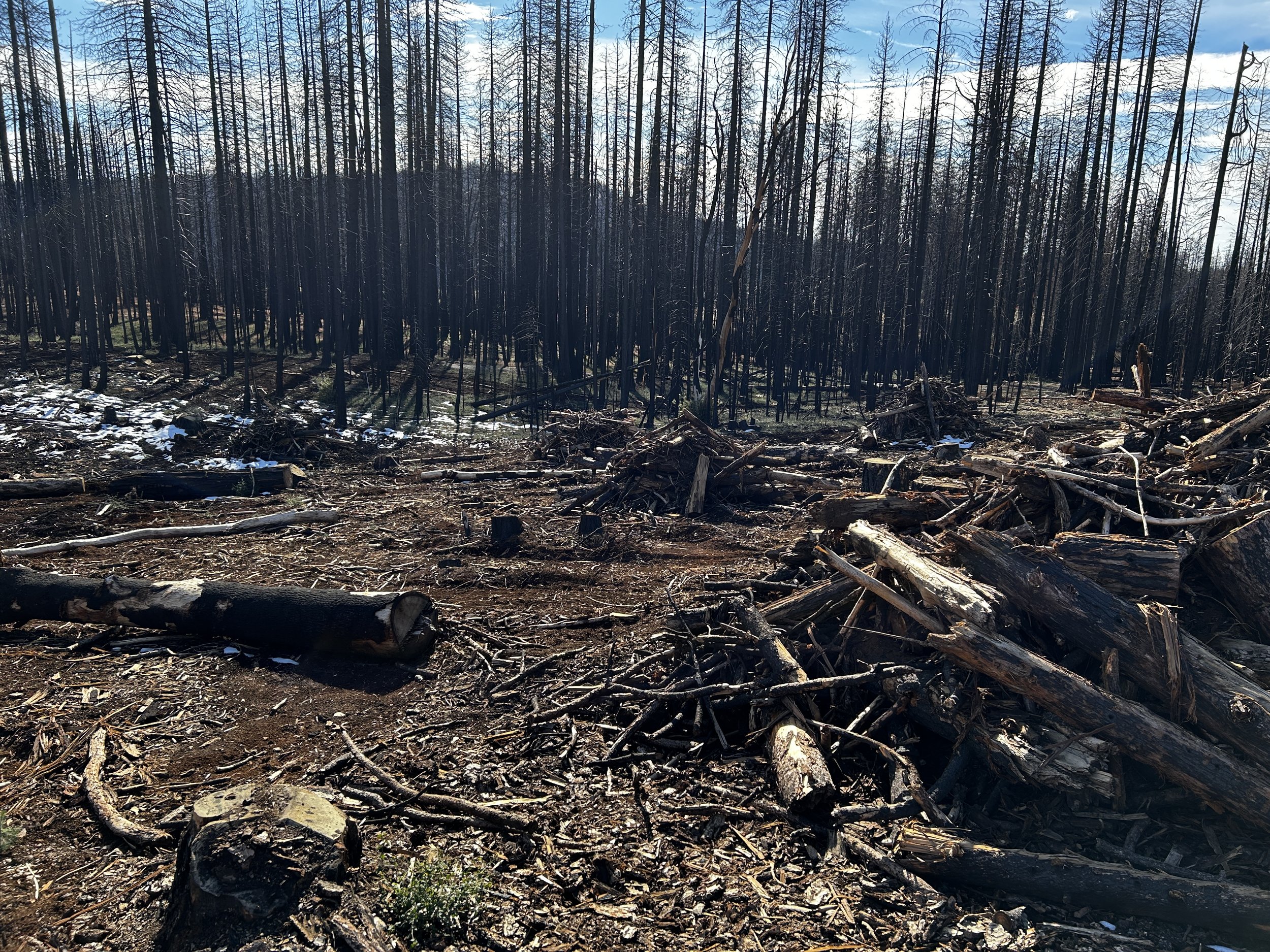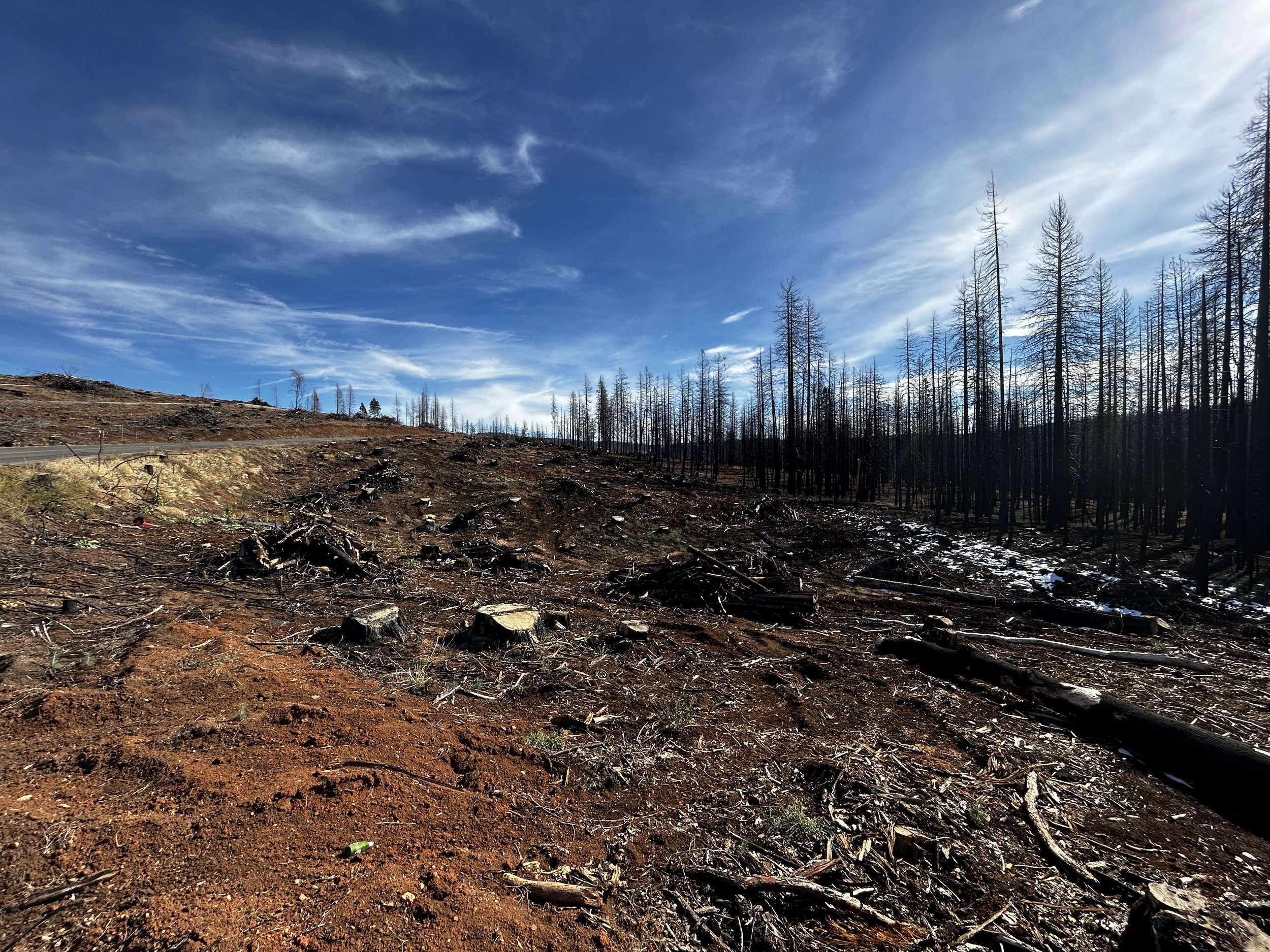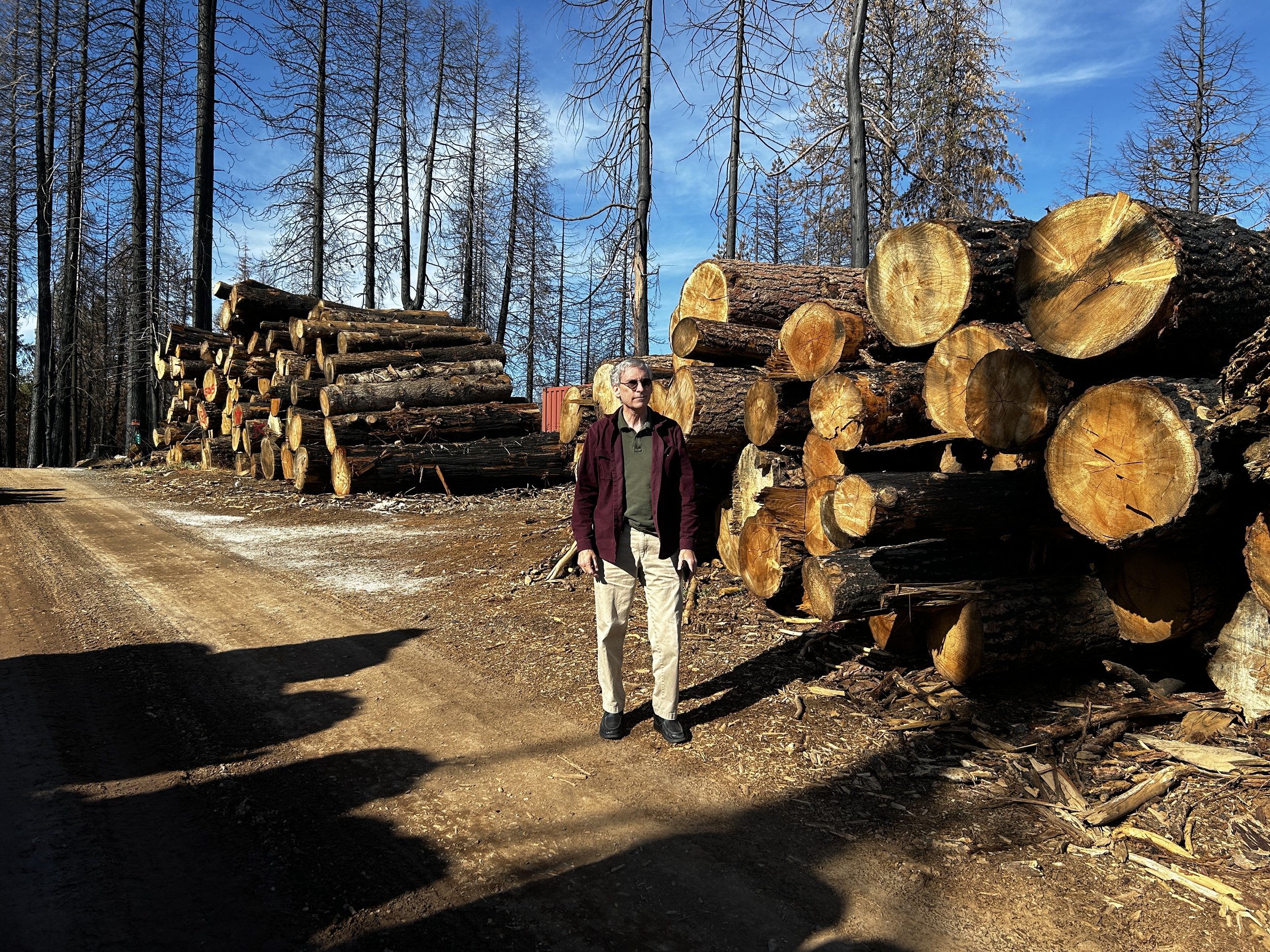Caldor Fire site visit
Last year the Caldor Fire blazed through the Central Sierra between Highways 88 and 50 destroying the town of Grizzle Flat and much of the area up to the doorstep of South Lake Tahoe. This type of megafire is what’s occurring now in our Sierras and can be largely attributed to the impacts of our climate change.
In November, our EPFW President, Perry Metzger along with Harry White of the California Anglers and Fish met with USFS’s Mark Egbert at his office in Placerville. Mark is the Incident Commander for restoration of the Caldor burn area. Following this meeting Perry and Harry visited some of the burned areas and Grizzle Flat to observe and note the restoration now taking place. These are photos of the forest devastation and the salvage logging now taking place.



We were interested in the impacts of this fire and what the USFS has found in fighting these fires. Below are some of the lessens learned and findings from other recent fires.
Thinning treatments can be effective in protecting forest communities. A specific example is thinning allowed fire crews to access the fire near Pollock Pines, set backfires.
Clear cut fuel breaks in remote areas don't work. Specifically, Mark said that SPI's clear cut fuel breaks did little to slow the Caldor Fire.
Mark said he is skeptical of biomass as a viable alternative for salvage logging. What he hears from biomass companies is "commercialization is 2 years out" and he's been hearing that for years. There is no biomass capability at present largely because the cost of biomass generation can’t compete with other forms of energy generation.